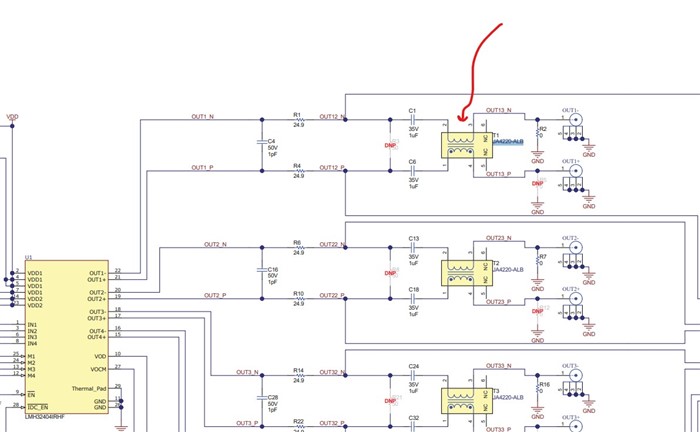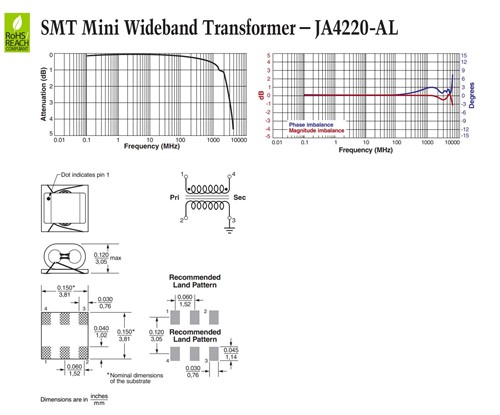Other Parts Discussed in Thread: LMH32404
Hello,
I looked into the schematic of the LMH32404RHFEVM.
Is there any chance that the output baluns (transformers from Coilcraft : JA4220-ALB have been connected in the wrong way?

This transformer pinout is actually as in Coilcraft datasheet:

Therefore the differential lines should have been connected to pins #2 and #3 of the transformer while the single-ended output should have been taken from pin #1 or #4, while the other one is grounded.
Am I right, or I missed something?
Thanks
Sariel

